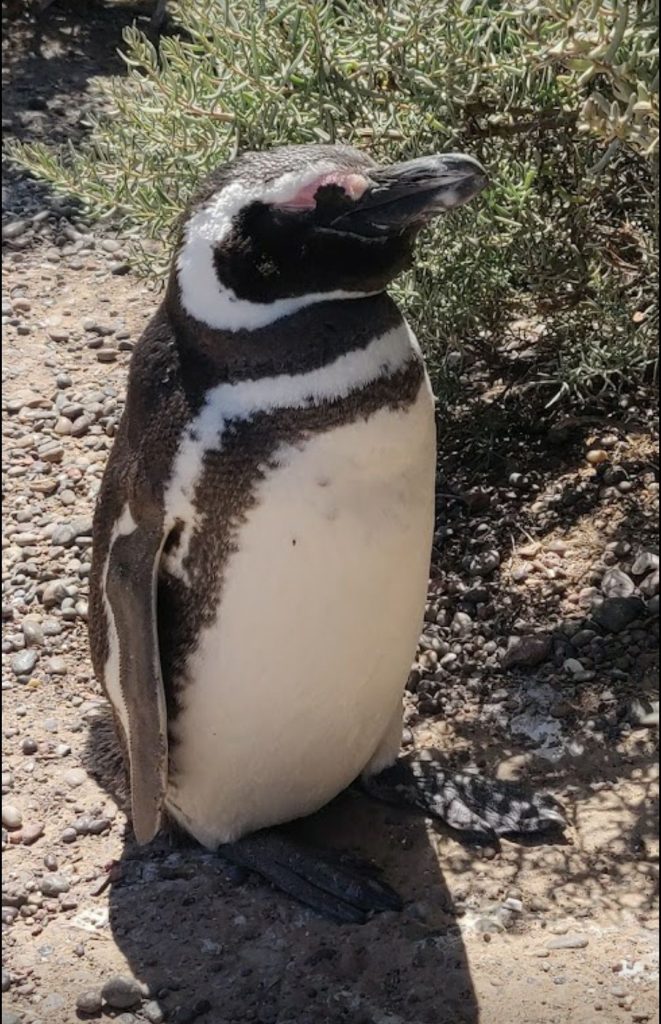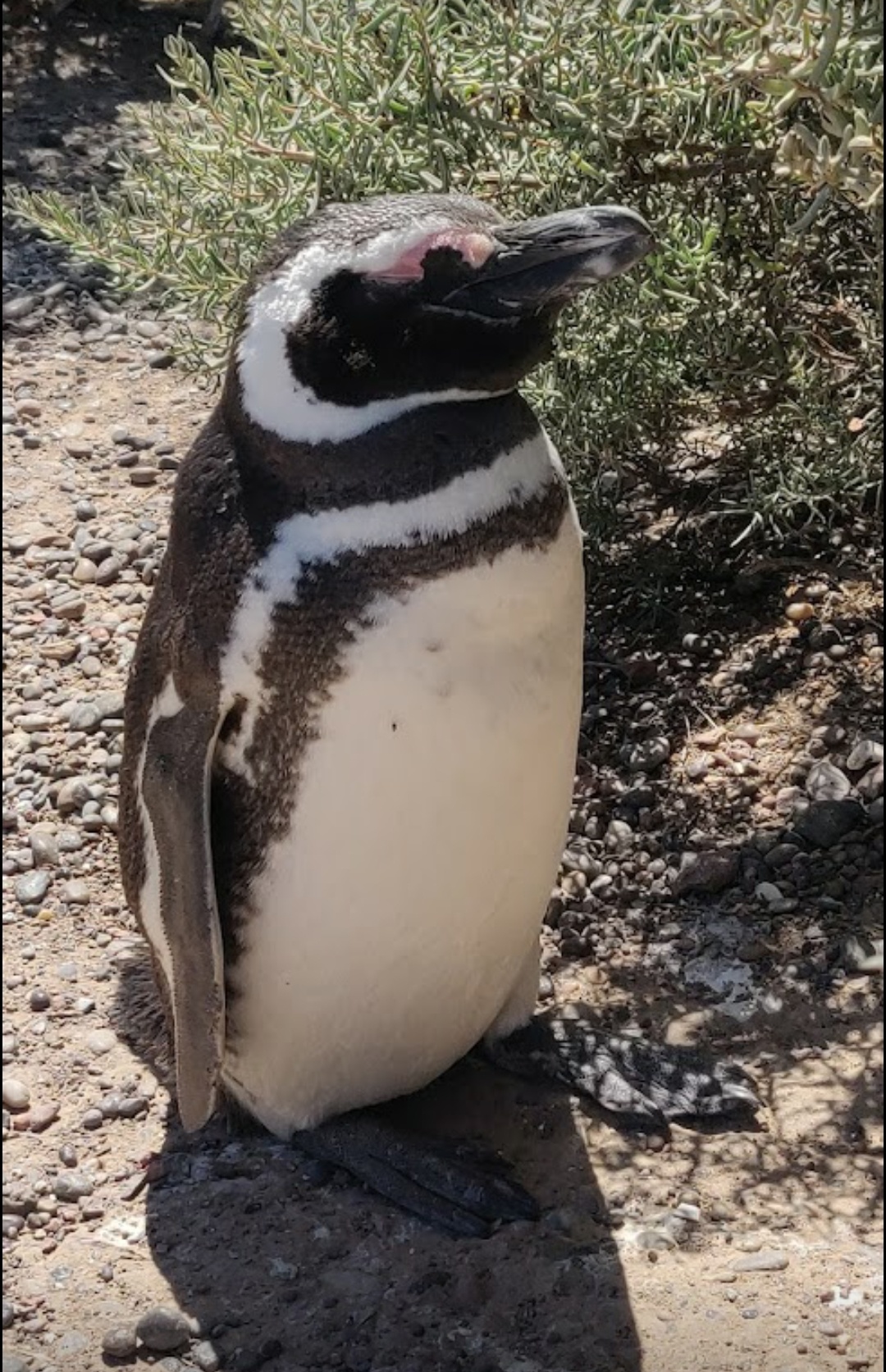As we drove through the centre of Argentina in the baking heat of high summer, we debated long into the night about our next destination. Would we head directly north-east towards the Buenos Aires province, and the quaint towns and big city lights on offer. Or should we swing down south to the Atlantic coastline and reward ourselves with a healthy does of vitamin nature. Having driven a lot since beginning our adventure, it was mighty tempting to choose the former, shorter option. However, we had heard such wonderful things about Argentina’s coastline and the marine wildlife there, that we decided the additional time and effort would be worthwhile.
Our detour took us south from Choele Choel to the coast, along the Ruta 3 highway, as far as Punta Tombo. From there we would begin the long trek back north, stopping at Puerto Madryn, Puerto Piramides and the famous Valdes Penninsula. A detour totaling 1,250km, a distance greater than a return trip from Malin Head to Mizen Head! It’s amazing what driving in a very large country does to your perception of “long drives”. Back in Ireland, any drive over 80km or one hour in length would have really needed to be something special to convince me.
Having made it to Punta Tombo, the most southerly point of our deviation, we left the campervan in search of the local celebrities. Measuring just 50cm in height, we thought they might be hard to find. How wrong we were. The rookery is home to an incredible 300,000 Magellanic penguins, the largest single gathering outside of Antarctica. They were literally everywhere! We even had the good fortune that our visit coincided with birthing season, so there were chicks cuddled up to their parents as far as the eye could see. Our own kids were beside themselves at the amazing opportunity to see the grand scale of nature at work. At one stage I thought we would have to check their pockets for contraband locals before we left, but thankfully we left with only wonderful memories and a few hundred photos.
Next stop was Puerto Madryn, the most well-know city in the Chubut province. This is the starting point for many whale watching tours during the season. Unfortunately for us, we were arriving a little after the end of the season, so there would be no real chance that we would encounter these giants of the ocean. Instead we would amuse ourselves with a few nice days spent on the city beach, and the football matches, running races and long-jump competitions that this would of course include.
Walking the pier one of the evenings, we were surprised to see what can only be described as a plague of jellyfish surrounding each side of the old wooden structure. To say that there were thousands of these not so cuddly creatures, would be no exaggeration. We had seen a couple washed-up on the beach the previous day but nothing pointed to such an imminent infestation. The local fishermen were not put off however, and continued their quest for rays and roosterfish.
From Puerto Madryn, we made the drive east to the Valdez Penninsula. If you have ever seen footage of Orcas (killer whales) attacking unsuspecting seals, there is a good chance that the video was shot here. It is a mecca for hungry dolphins (yes Orcas actually belong to the dolphin family – a new fact for the day!), wildlife enthusiasts and documentary directors.
Our base on the penninsula for the few days would be in Puerto Piramides. A small village relying almost 100% on tourism to survive, it is a place of immense natural beauty and the locals embrace the tourists this attracts.
Accommodation in the village for a campervan is limited to the one available campsite. It was a no-frills offering, but being relatively self-sufficient, we were delighted with our location right beside the entrance to its magical beach. Here we enjoyed three days and nights basking in the summer sun, virgin beach and crystal clear water.
We ventured out on two of the days to catch a view of the local wildlife. Our first jaunt took us just a few km outside the village to see a large colony of sea lions. Getting to the viewpoint had a few incredibly steep hills, so we saw sense and parked Grandullona about 2km away and hiked the rest of the way there. Before arriving, we could easily hear the cacophony of barks, growls and grunts from these outgoing mammals. They really were a sight and sound to behold, watching them (from a distance) in their natural habitat, doing what they do best.
Our second trip took us further afield. We contracted a local driver named Pela to take us around the penninsula for the best part of the day. The trip is c.200km of non-paved gravel roads. Known in South America as “ripio’, this type of road is not campervan friendly, so we generally look to avoid it driving on it whenever we can. We travelled in the relative comfort for the day to see more marine wildlife such as Magellanic penguins, Elephant seals and sea lions. We also managed to see armadillios, guanacos and maras (a rabbit-like creature).
Both parents and offspring really were amazed at the plethora of wildlife on view over the course of our detour. We were also grateful for finding such beautiful and mostly empty beaches to enjoy. While we did not see any Orcas or humpback whales on our visit, we began our long trek north invigorated thanks to the natural beauty that this part of the world had to offer.
While detours can often seem like misplaced effort, we all agreed that this was one well worth making.
Click here to read the “Chance Encounters” blog post










Leave a Reply